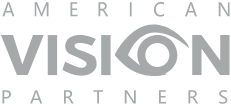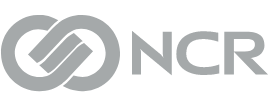Job Architecture and Levelling Framework
Maximize ROI Through Structured Role Design
Salary.com’s consultants design transparent Job Architecture systems — often referred to as Job Classifications in the public sector — that eliminate role redundancy, align pay with actual responsibilities, and provide a framework for smarter workforce decisions.
The Financial and Operational Case for Job Architecture
Disorganized job architecture drains resources, undermines productivity, and opens the door to compliance issues. Our expert-designed frameworks do the opposite, helping you:

Eliminate compensation waste
Root out pay gaps and premium payments for misclassified roles by aligning every salary with verified market data and actual responsibilities.

Streamline workforce efficiency
Identify and consolidate redundant positions while creating scalable frameworks for smarter hiring and promotion.

Mitigate compliance risk
Establish defensible leveling criteria and standardized titles to meet pay equity requirements and reduce legal exposure, with documentation that satisfies regulatory audits.

Optimize workforce planning
Map growth paths and right-size teams using consistent scope definitions, enabling data-driven decisions about hiring, promotions and reorganizations.
Our Process: Structured, Strategic, and Built to Deliver
Whether you need to build a salary structure from scratch or recalibrate an outdated framework, we tailor the engagement to your goals. Our approach typically contains these core steps:
Initial Assessment
- Define the project scope, goals, and success criteria.
- Review existing salary structures, job categories, and pay grades to identify gaps, internal inequities, and misalignment with the market.
- Confirm pay positioning and market data needs.
Salary Structure Design or Recalibration
- Analyze market data and apply regression modeling to establish current pay trends.
- Recommend structure type (grade or range) and design elements.
- Develop salary ranges aligned to job levels, business objectives, and market benchmarks.
- Model structure options to support budgeting and competitiveness.
Cost-of-labor Zone Modeling (if necessary)
- Assess how current pay practices account for geographic differences.
- Use Salary.com’s Geographic Assessor to analyze cost-of-labor differentials.
- Design salary zones with defined thresholds and location-based pay ranges.
- Deliver implementation-ready guidance, including zone assignments and employee-level impact analysis.
Delivery and Documentation
- Final salary structure(s) including pay grades, ranges, midpoint differentials, and job mapping, delivered in a clear, actionable format.
- Comprehensive documentation of methodology, key decisions, and structure rationale to support stakeholder alignment and future updates.
Ongoing Support (if necessary)
- Financial impact modeling to guide executive decision-making and help secure buy-in from leadership.
- Implementation support to ensure long-term success and adoption across your organization.
- Training and rollout support to ensure successful adoption.
Why Choose Salary.com’s Consultants
Diversified and Experienced Team
Our individual consultants have decades of experience in a variety of industries. We have the knowledge and skills to help you in your specific organization, industry, and circumstances.
High-Touch Communication
Clear communication is a cornerstone of our process, and we will be with you every step of the way. Our team of consultants are available to provide guidance and support.
Salary.com’s Powerful Solutions
We leverage Salary.com’s industry-leading total compensation management platform, making full use of its trusted data and award-winning compensation solutions.
An Extra Set of Hands
Serious analysis is a big undertaking that all too often gets pushed to the bottom of the to-do list. This is a mistake, and everyone knows it, but sometimes your internal team just can’t get the time. Our consultants provide the extra resources and expertise to implement your compensation initiatives.
Third-Party Neutrality
Bringing in outside help demonstrates your commitment to fairness, transparency, and impartiality. It also guarantees a level of discretion not always possible within an organization.
Organizations Getting It Right
Insights You Need to Get It Right





























